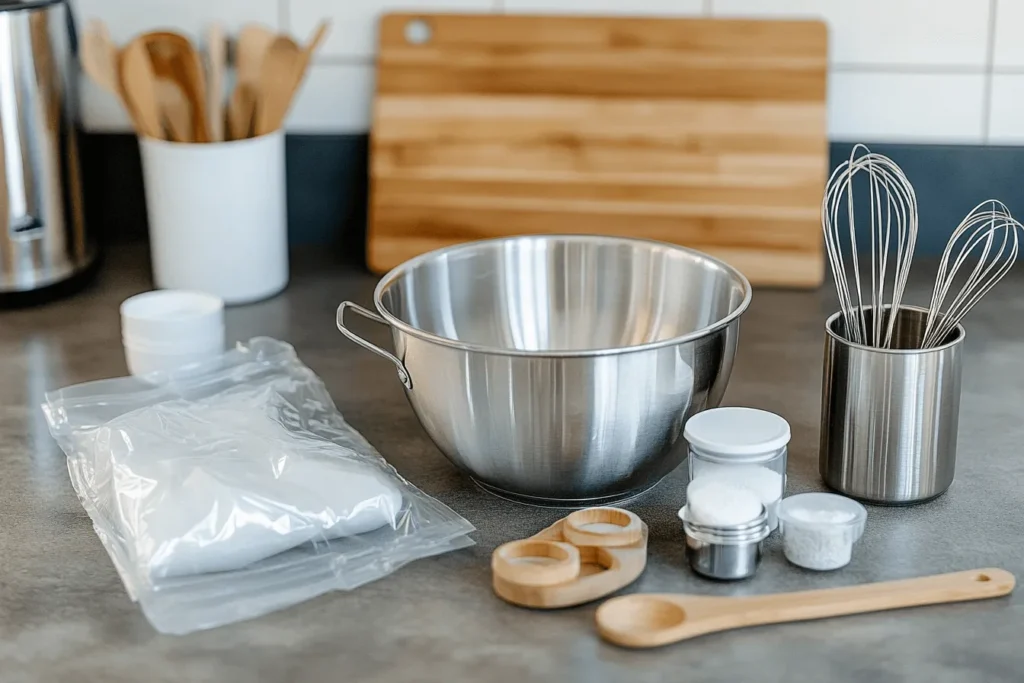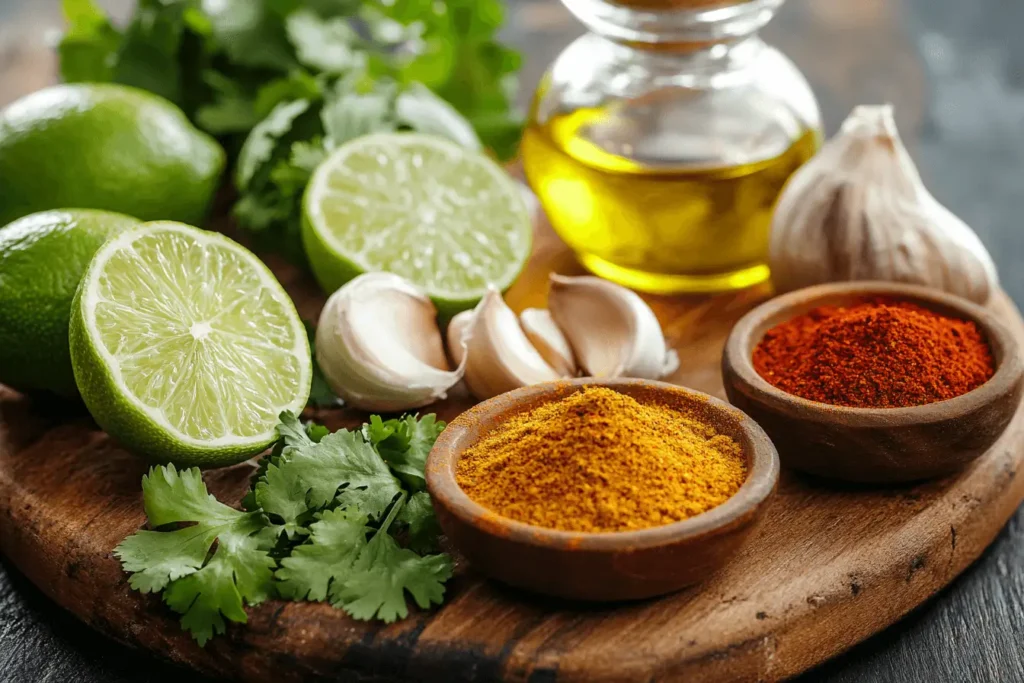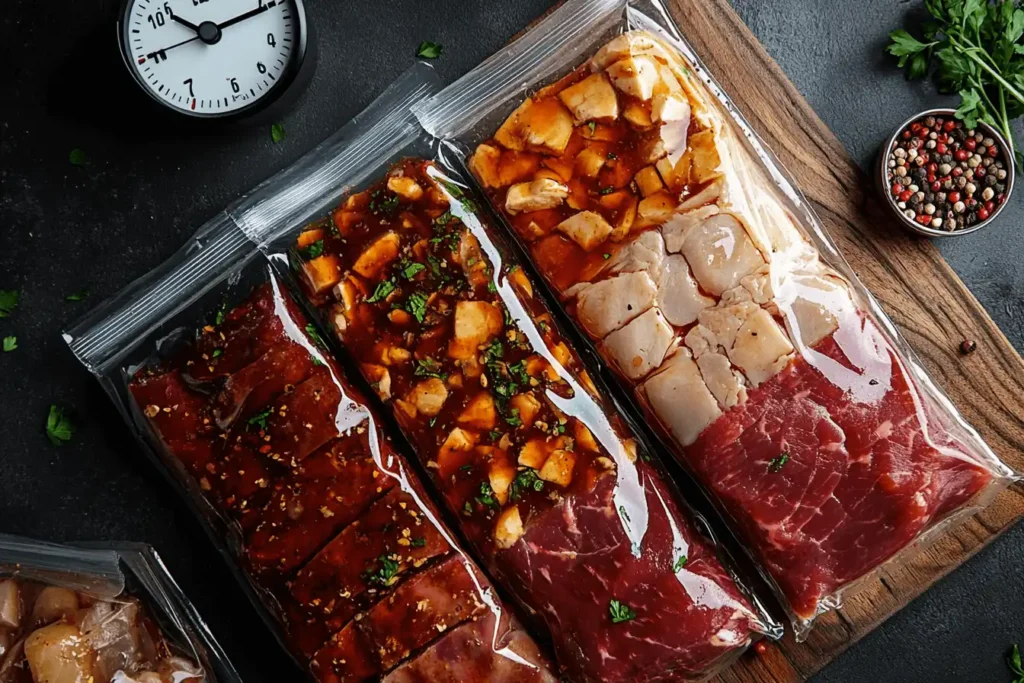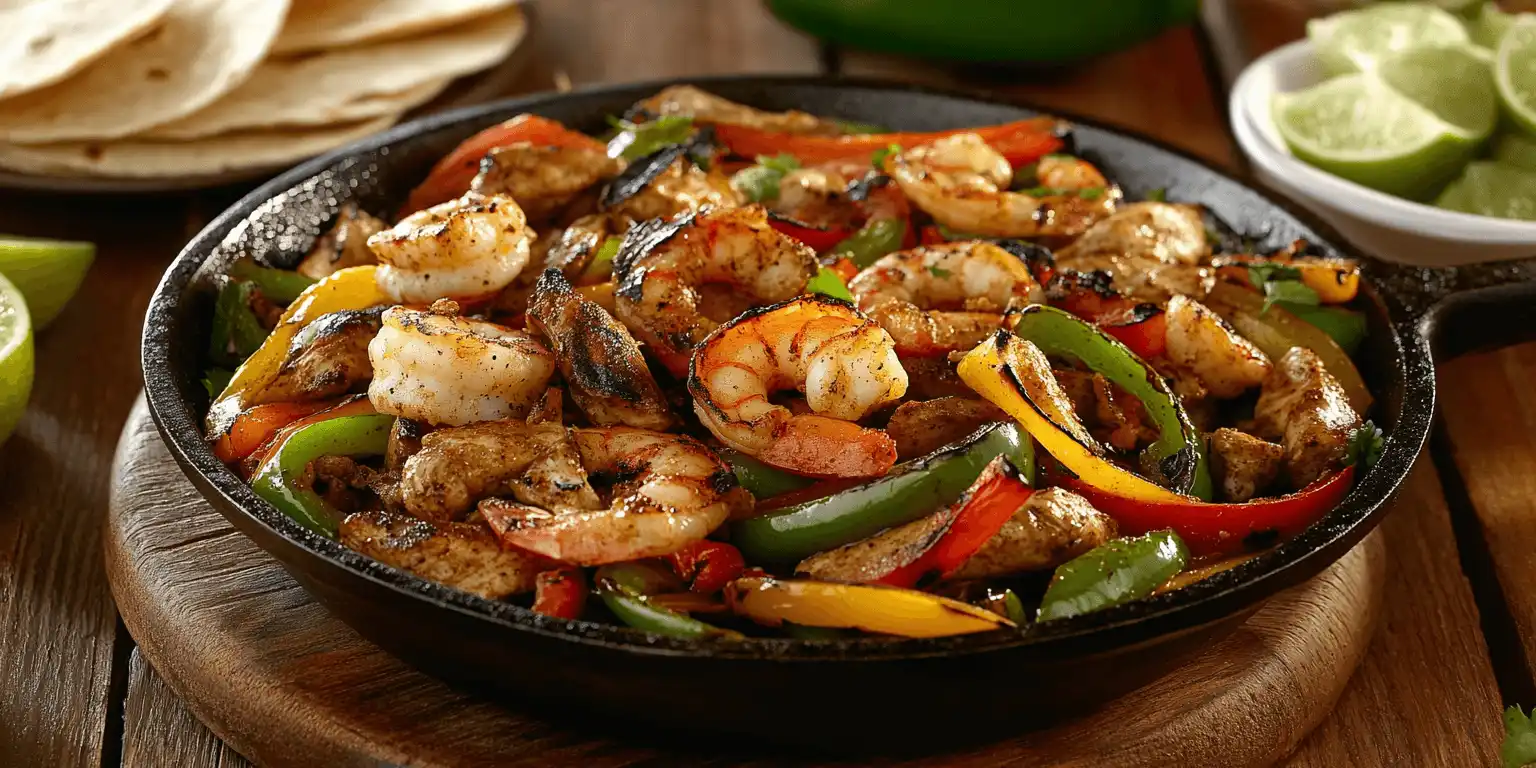When it comes to Mexican cuisine, few dishes can compete with the sizzle and aroma of freshly cooked fajitas. The key to achieving that iconic flavor lies in the marinade—a magical blend of ingredients that transforms simple proteins and vegetables into a fiesta of flavor. But what exactly is a fajita marinade, and why should it matter?
In essence, a fajita marinade is a flavorful liquid mix designed to tenderize and infuse meats, veggies, or plant-based proteins with rich, bold flavors. The process of marinating not only enhances taste but also ensures that each bite is juicy, succulent, and unforgettable. Whether you’re a fan of chicken, beef, shrimp, or vegetarian options, a well-crafted marinade can make all the difference.
This guide will take you through everything you need to know about fajita marinades—from understanding their essential components to mastering techniques that guarantee perfect fajitas every time. So, grab your apron and let’s dive into the art of creating the ultimate fajita marinade!
Table of contents
Types of Fajita Marinade
Fajita marinades are as diverse as the ingredients you choose to include. From traditional Mexican flavors to bold, innovative twists, there’s a marinade for every palate. Here, we’ll explore some popular types of fajita marinades that can elevate your cooking game.
Traditional Mexican Marinade
The cornerstone of any authentic fajita experience, a traditional Mexican marinade relies on classic ingredients that bring out the best in your protein or vegetables.
Key Ingredients:
- Lime juice for acidity.
- Olive oil to bind the marinade.
- Garlic, cumin, and chili powder for flavor.
- Fresh cilantro for a herbaceous kick.
- A splash of tequila for an extra depth of flavor (optional).
This marinade works wonderfully with chicken, beef, or shrimp, giving it that signature smoky, zesty taste we associate with fajitas.
Sweet and Spicy Marinade
For those who enjoy a balance of flavors, a sweet and spicy marinade offers the perfect combination of heat and sweetness.
Key Ingredients:
- Honey or brown sugar for sweetness.
- Chipotle peppers or cayenne pepper for heat.
- Soy sauce or tamari for a savory umami punch.
- Lime juice and apple cider vinegar for acidity.
This style of marinade is particularly great for chicken or shrimp, as the sweetness caramelizes beautifully during cooking.
Herb and Citrus Marinade
If you prefer a fresher, lighter flavor profile, herb and citrus marinades are an excellent choice.
Key Ingredients:
- Lemon or orange juice for a bright citrusy tang.
- Fresh herbs like parsley, thyme, or oregano.
- Olive oil and minced garlic for a savory base.
- Cracked black pepper and sea salt for seasoning.
This marinade is versatile and works well with both meat and vegetables, especially for those looking for a less spicy option.
Vegan and Vegetarian Marinade
Marinating plant-based proteins and vegetables requires a slightly different approach to ensure maximum flavor absorption.
Key Ingredients:
- Soy sauce or tamari for depth.
- Smoked paprika and nutritional yeast for a smoky, cheesy flavor.
- Balsamic vinegar for a sweet yet tangy profile.
- Maple syrup for subtle sweetness.
- Olive oil to coat and lock in moisture.
This marinade is ideal for tofu, tempeh, mushrooms, or bell peppers, giving them a bold, savory taste that rivals any meat-based fajita.
How to Make the Perfect Fajita Marinade
Creating the perfect fajita marinade is simpler than it seems, but it does require attention to detail to ensure the flavors come together harmoniously. In this section, we’ll walk through the process step-by-step to help you master the art of fajita marination.
Tools and Equipment Needed

Before diving into the ingredients, gather the essential tools to streamline your preparation:
- Mixing Bowl: A medium-sized bowl to combine all ingredients.
- Whisk or Fork: For blending the marinade until smooth.
- Measuring Cups and Spoons: To ensure precise proportions.
- Resealable Plastic Bag or Container: For marinating the protein or vegetables evenly.
Having the right tools on hand makes the process quicker and less messy.
Ingredients for a Classic Fajita Marinade

Here’s a simple recipe to get started with a traditional fajita marinade:
- Juice of 2 limes (for acidity)
- 1/4 cup olive oil (for moisture and flavor)
- 2 garlic cloves, minced (for depth)
- 1 tsp ground cumin (for smokiness)
- 1 tsp chili powder (for heat)
- 1 tsp paprika (for color and flavor)
- 1/2 tsp salt (to enhance all the flavors)
- 1/4 tsp black pepper (for balance)
- 2 tbsp chopped fresh cilantro (optional but highly recommended)
Feel free to adjust these quantities to suit your taste preferences.
Fajita Marinade: Step-by-Step Process
- Prepare the Marinade Base:
In your mixing bowl, combine the lime juice, olive oil, minced garlic, and spices. Whisk the mixture until the ingredients are well blended. The consistency should be smooth and slightly thick. - Taste and Adjust:
Before adding the marinade to your ingredients, taste it. If it’s too tangy, add a pinch of sugar. If it lacks punch, add a bit more chili powder or cumin. - Marinate Your Ingredients:
Place your chosen protein (chicken, beef, shrimp) or vegetables (bell peppers, onions, mushrooms) into a resealable plastic bag or container. Pour the marinade over them, ensuring every piece is coated evenly. - Allow Time to Marinate:
- Chicken or Beef: 2-8 hours.
- Shrimp: 15-30 minutes.
- Vegetables: 30 minutes to 1 hour.
Marinating too long can overpower delicate proteins like shrimp, so keep track of time.
- Storage:
If you’re not cooking immediately, seal the bag or container tightly and refrigerate it. Ensure it stays cold to prevent bacterial growth.
Marination Techniques for the Best Fajitas

Mastering the technique of marination is just as important as choosing the right ingredients. Proper marination ensures your proteins and vegetables absorb the marinade’s flavors and stay tender during cooking. Here’s how to marinate different types of ingredients for the best fajitas.
Marinating Chicken
Chicken is a popular choice for fajitas due to its ability to soak up bold flavors.
- Cutting and Preparing the Chicken: Use boneless, skinless chicken breasts or thighs. Slice them into even strips for quicker marination and uniform cooking.
- Marination Time: Allow the chicken to marinate for at least 2 hours but no more than 8 hours. Over-marinating can break down the chicken too much, resulting in a mushy texture.
- Tips for Maximum Flavor: Massage the marinade into the chicken before sealing the bag or container. This helps the flavors penetrate deeper.
Marinating Beef
For a rich and robust fajita experience, beef (especially skirt steak or flank steak) is a fantastic option.
- Preparing the Beef: Trim any excess fat and slice the steak against the grain to ensure tenderness.
- Marination Time: Marinate beef for at least 4 hours or overnight for the best results. This allows the acidic elements to tenderize the meat and infuse it with flavor.
- Tips for Tender Beef: Use a fork to lightly pierce the beef before marinating. This helps the marinade seep into the meat.
Marinating Shrimp
Shrimp adds a delightful seafood twist to fajitas but requires careful handling due to its delicate nature.
- Preparing the Shrimp: Remove shells, devein, and rinse the shrimp.
- Marination Time: Shrimp needs only 15–30 minutes to marinate. Longer marination can make the shrimp rubbery.
- Tips for Even Flavor: Toss the shrimp frequently during the marination process to ensure all sides are coated evenly.
Marinating Vegetables
Vegetables are a versatile addition to fajitas, bringing both flavor and texture to the dish.
- Choosing Vegetables: Popular options include bell peppers, onions, zucchini, and mushrooms.
- Preparing the Vegetables: Slice vegetables into uniform sizes for even cooking.
- Marination Time: Let vegetables marinate for 30 minutes to 1 hour. Since they’re porous, they don’t need as much time as proteins to absorb flavor.
- Tips for Vegetables: Use a separate container for vegetables if you’re marinating them with proteins to avoid cross-contamination.
General Marination Tips
- Refrigeration Is Key: Always marinate in the refrigerator to prevent bacterial growth.
- Use Resealable Bags: These allow for easy turning and coating of ingredients. Plus, they minimize mess.
- Don’t Overcrowd: If marinating a large quantity, divide into smaller batches to ensure every piece gets adequate exposure to the marinade.
- Discard Used Marinade: Do not reuse marinade that has been in contact with raw proteins unless it has been boiled to kill bacteria.
Common Mistakes to Avoid in Fajita Marinade
Even with the best ingredients and intentions, marination mishaps can lead to disappointing fajitas. To help you avoid these pitfalls, here are the most common mistakes people make when preparing fajita marinade—and how to fix them.
1. Over-Marinating Proteins
Marinating for too long can have the opposite effect, breaking down the proteins excessively and resulting in mushy meat.
- Chicken or Beef: Marinate for 2–8 hours. Overnight is acceptable for beef, but not for chicken.
- Shrimp: Keep marination time under 30 minutes to prevent the delicate texture from becoming rubbery.
Solution: Always check recommended marination times for each type of protein. Set a timer if needed!
2. Ignoring the Balance of Ingredients
A marinade is all about balance. Too much acid can overpower the flavors, while too much oil can make the dish greasy.
Solution: Stick to a ratio of 3 parts oil to 1 part acid (e.g., lime juice or vinegar). Taste your marinade before using it and adjust with spices, sweeteners, or salt as needed.
3. Using the Same Marinade for Raw and Cooked Ingredients
Reusing marinade that has been in contact with raw meat without boiling it first is a major food safety hazard.
Solution: Reserve a clean portion of marinade before adding raw meat or boil the used marinade for at least 5 minutes before using it as a sauce or glaze.
4. Skipping the Pat Dry Step
Failing to pat your proteins or vegetables dry before cooking can lead to steaming instead of searing, resulting in less flavorful fajitas.
Solution: After marinating, remove excess liquid by patting the ingredients dry with paper towels. This step is especially important for grilling or pan-searing.
5. Overcrowding During Cooking
Cooking too many marinated ingredients at once can lead to uneven cooking and loss of flavor.
Solution: Cook in smaller batches, allowing space between pieces for even heat distribution and caramelization.
Conclusion: Fajita Marinade
Fajita marinades are the secret to transforming a simple dish into a flavor-packed experience. With the right combination of ingredients and techniques, you can create marinades that elevate chicken, beef, shrimp, and even vegetables to a whole new level. By understanding the balance of acids, oils, and spices, you can customize marinades to suit your tastes and preferences.
Whether you prefer traditional Mexican flavors, sweet and spicy blends, or vegan-friendly options, the possibilities are endless. By avoiding common mistakes and following the best practices for marinating and cooking, you’ll master the art of making fajitas that are tender, juicy, and bursting with flavor.
So, grab your favorite ingredients, whip up a batch of marinade, and let the sizzling sounds and tantalizing aromas of fajitas bring the fiesta to your table. Happy cooking!
Related Recipe Articles You Might Like
If you’re looking to elevate your fajita nights, explore these BBQ Shrimp Recipes for a smoky twist on seafood fajitas. For plant-based enthusiasts, incorporating ideas from Dense Bean Salads can add both flavor and nutrition to your fajita spread. Additionally, a touch of Creamy Garlic Parmesan Sauce could serve as an unexpected, delicious topping for your marinated vegetables.
Additionally, for a hearty and flavorful option, try our Brisket Sandwich Recipe, which offers a satisfying complement to your fajita feast
Dive into these inspirations to create unforgettable fajita feasts.
Frequently Asked Questions about Fajita Marinade
Can You Marinate Fajitas Too Long?
Yes, marinating fajitas for too long can negatively impact the texture, especially for proteins like chicken and shrimp. The acids in the marinade break down the meat’s fibers, which is great for tenderizing but can lead to mushiness if overdone. Stick to these recommended times: 2–8 hours for chicken or beef and 15–30 minutes for shrimp.
What to Use to Tenderize Fajita Meat?
To tenderize fajita meat, use acidic ingredients like lime juice, vinegar, or pineapple juice, which help break down tough fibers. Adding natural tenderizers like yogurt or buttermilk also works well for a creamy twist. Pair these with a balanced mix of oil and spices to enhance flavor while ensuring tenderness.
Why Are Restaurant Fajitas So Tender?
Restaurant fajitas are tender due to proper marination, using acidic ingredients like lime juice or vinegar, and cooking techniques like grilling at high heat to seal in juices. Many restaurants also slice meat thinly against the grain, which makes each piece easier to chew.
Do You Cut Fajita Meat Before Marinating?
It’s better to marinate the meat in larger pieces to retain its juiciness during cooking. Once cooked, slice the meat against the grain into thin strips. This ensures it’s tender and flavorful while maintaining a great texture.

